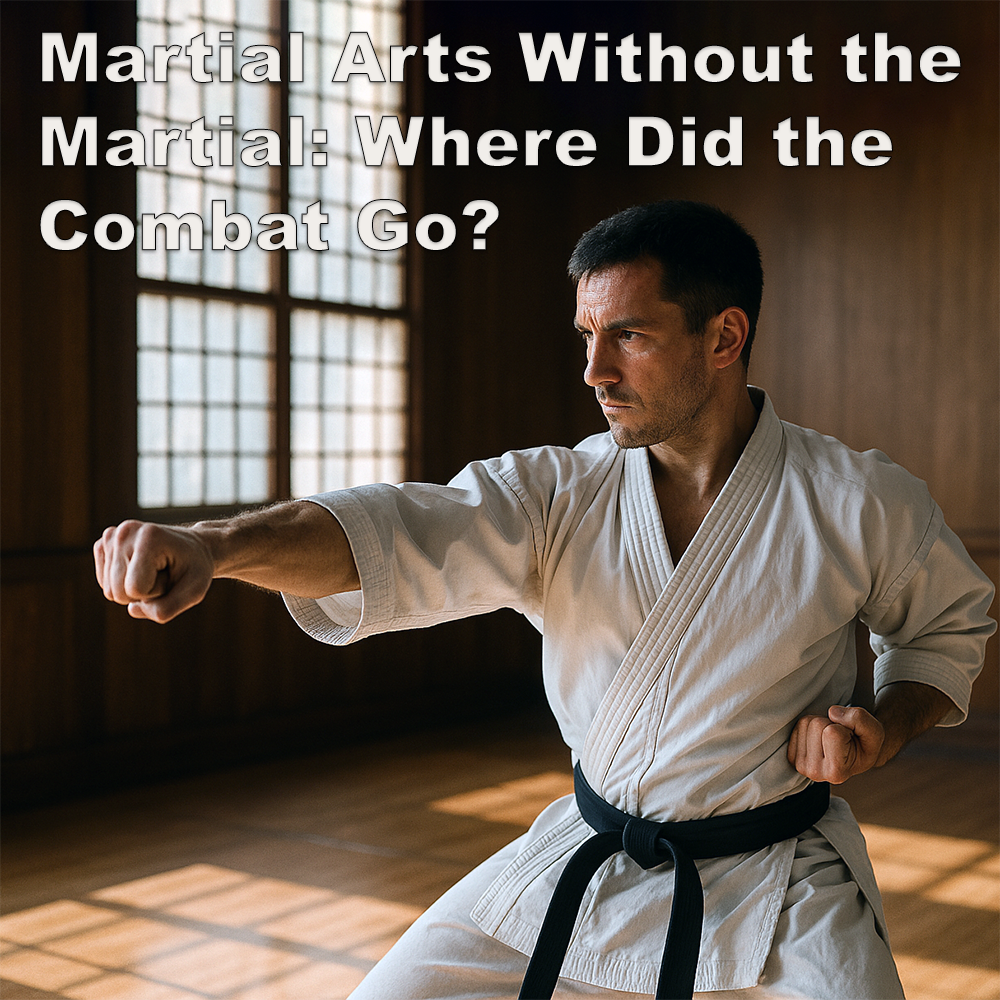
(Approx 2 minute 40 second read)
I came across a quote recently that made me stop and think. It said: “The martial arts is not just a process for training fighters. Fighting is of least importance. What is important is the growth in the student’s physical structure, mental discipline, and emotional control.”
.
Now, while I understand the sentiment behind it – and there’s truth in saying that the martial arts can help with discipline and emotional control – I can’t help but question the claim that fighting is of least importance. That, to me, completely misses the point of what the martial arts are at their core.
.
Surely, if fighting is of least importance, why call it martial arts at all?
.
No one I’ve ever talked to or met walked into a dojo for the sole purpose of becoming emotionally balanced or learning how to become mentally disciplined.
.
Those things might come as a byproduct of training, but they are not what makes anyone walk through the door.
.
If someone is looking for spiritual growth or physical wellness, why not join a yoga class or a meditation group? Why step into a place that, historically and practically, was meant to prepare people for violence?
.
The truth is, people are drawn to martial arts – often subconsciously – because they want to feel more secure. More capable. More prepared. They want to know they can handle themselves if something goes wrong.
.
That’s the original intent of the art I care about. For me, the purpose has always been self-protection, using the classical methods which existed before karate’s modernization – with its stronger emphasis on practical self-defense.
.
That doesn’t mean we glorify violence. In fact, the opposite is true. The better you understand violence, the more you come to respect it – and do your best to avoid it. But to suggest that the fighting aspect is unimportant is to strip it of its purpose. If you remove this aspect, or say it is of least importance, what you’re left with is exercise, philosophy, and ritual.
.
There’s value in those things, sure. But let’s not pretend it’s still the martial arts.
.
I believe this shift in message – downplaying the combat side and talking up the emotional and mental development side – is mostly about marketing. It’s a way to appeal to a wider audience, especially families or those who are hesitant about the idea of violence.
.
This shift began when karate moved to the Japanese mainland, where it was reshaped to fit into schools and the military. The focus moved from self-protection to discipline and character development. I understand that. But let’s be honest about it. Don’t bait people in with the idea of self-defense, then deliver fitness and positive affirmations.
.
This focus on character development over combat is how modern karate often defines itself. It’s a version of the art made more acceptable – but I believe, less honest.
.
If you want the personal development benefits of the martial arts to mean something, they must come from the training – real training. Not just going through motions. Not just forms without function. But practice that respects the roots of the art.
.
In the end, the martial arts aren’t about looking for a fight. But they are absolutely about being prepared for one. Strip away that core, and you’re left with something that might still look the part – uniforms, belts, even kata – but it no longer serves its original purpose. And quite frankly, it doesn’t.
.
Martial arts without the martial are just… arts. And while there’s nothing wrong with that, let’s not pretend it’s the same thing. If we lose sight of what these systems were built for, we risk turning them into empty rituals – impressive to watch, maybe, but meaningless when it matters most.
.
That’s not what I train for, and I doubt the old masters intended it either. If that’s your thing, then perhaps my Page is not for you.
.
.
Written by Adam Carter
